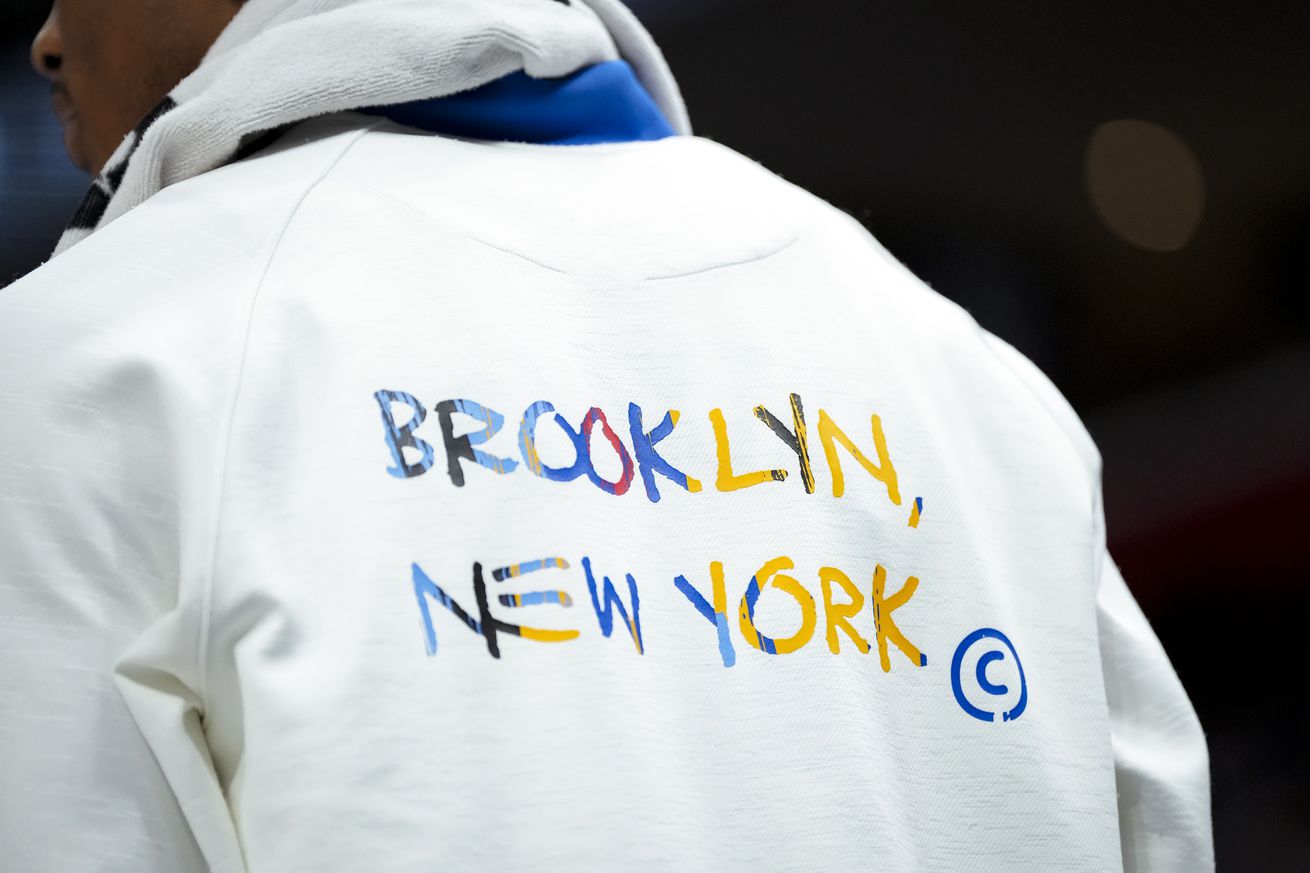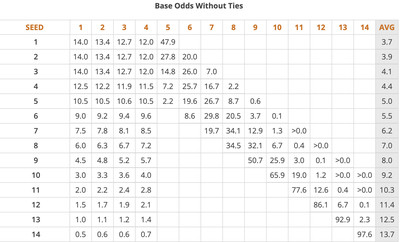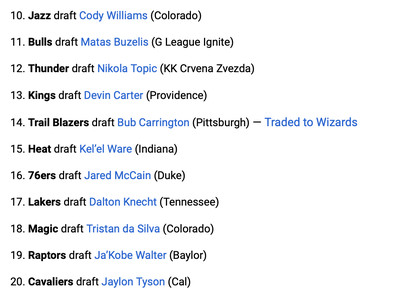
It’s one thing to lay out a plan and another thing to execute one. Alas, a long-term vision has unfolded for the Nets.
Maybe “great” is a stretch, given the lack of team success, but Dorian Finney-Smith was an admirable Net over his near-two seasons in Brooklyn. Aside from being an extremely pleasant and well-liked individual, the Nets were much, much better with DFS on the court versus when he sat.
In a sample size of nearly 6000 minutes, the Nets were a dead-average NBA team with Finney-Smith on the court, and a really bad one when he was on the bench, in street clothes or not. This season, they handily won their minutes with Finney-Smith, and got destroyed when he sat.
It would have been nice if Doe-Doe hadn’t reinforced the Nets-as-little-brother narrative in his first public comments since his trade to the Los Angeles Lakers, but one truthful, off-hand comment pales in comparison to his body of work as a Net…
Dorian Finney-Smith on being traded to the Los Angeles Lakers
“I’m finally with the big brother. It feels good.” pic.twitter.com/bHHyRmgEKg
— Cody Mallory (@RealCodyMallory) December 31, 2024
In another world, Finney-Smith leaves Brooklyn as a cliché: a beloved, hard-nosed role player who put his body on the line for a team that experienced great success, a team that never got lil-bro’d by their opponents … or neighbors.
Alas, the Brooklyn Nets went 57-86 while Dorian Finney-Smith was on the roster, which brings us to a more pressing issue: What is next for the franchise?
I’m not sure much can be gleaned from their recent trades of Dennis Schröder and Dorian Finney-Smith/Shake Milton, at least nothing that we didn’t already know: This season is the kickstart of a rebuild. How long it lasts, now that is the question.
Kevin Pelton of ESPN reported, following the latter trade, that the Memphis Grizzlies’ offer for DFS included Luke Kennard, John Konchar, a top-17 protected first-round pick and crucially, a demand that Brooklyn included their 2025 second-round pick in the deal. In sum, Brooklyn would receive an expiring contract in Kennard, $18.5 million on their books through the 2026-2027 season in Konchar, and a slightly higher pick at the 1st/2nd round turn in the upcoming NBA Draft.
Thus, the draft compensation for Finney-Smith would be negligible, not to mention the risk that the perpetually injured Grizzlies slide three games down to the Play-In Tournament, lose two games, and get to protect the first-rounder anyway. That seems like far more of a deterrent to taking the Memphis package than Konchar’s annual salary of $6 million.
And yet, league sources continue to tell NetsDaily that Brooklyn is highly motivated to keep and even use their projected $70 million in cap space this summer “if the right opportunity” presents itself. That raises the eyebrows.
What does a bad team that owns four first-round picks and one second in 2025 spend 70 million dollars on? Unless, say, Giannis Antetokounmpo or someone close to his ilk demands a trade to Brooklyn, it makes no sense to hand out serious money to an aging Jimmy Butler…
More from @NYPost_Lewis “(Jimmy} Butler isn’t just open to Brooklyn, but fond of it, sources told The Post. Now, he’s not a Net and he might never get close to becoming one. But to dismiss the possibility out of hand is foolish.”
— NetsDaily (@NetsDaily) September 7, 2024
Does Sean Marks continue to play the classics and hand out an eye-popping offer sheet to a restricted free agent like Santi Aldama, Josh Giddey, or Jonathan Kuminga?
Given how great the NBA is at taking a blowtorch to long-term plans, and given the history of the Brooklyn/New Jersey/New York Nets, it may be a foolish endeavor to lay out a plan for the franchise that has a scope longer than 24 hours. But we’re going to try anyway.
Step 1: Pray to the Draft Lottery Gods
Given the (correct) course of action chosen by Brooklyn’s front office, but again, not by an admirable team of coaches and players who compete really hard, we can admit they are in a race to the bottom. For our purposes, their 12-20 record is one game worse than the 11-21 record of the Portland Trail Blazers.
As such, Brooklyn is currently holding the seventh-best lotto odds in the league, and their chances of moving up aren’t looking too great: No team in front of Portland has more than seven wins.
Any one team like the New Orleans Pelicans or Toronto Raptors could get healthy, then hot, but in this crapshoot of bad basketball, let’s assume Brooklyn ends up with the sixth-best lottery odds…

Thanks to Tankathon, we can see that’d give Brooklyn a greater-than-50% chance to end up outside of the top-six draft choices. Not great for Year 1 of a rebuild! Whatever, just cross your fingers and hope for the best. It is, after all, a lottery. Atlanta Hawks had a 3.0% shot at the overall No. 1 last season with the 10th worst record and won the overall No. 1 while the Detroit Pistons had the best odds (14%) after finishing with the worst record and wound up with the No. 5 pick … for the second time.
Step 2: Make three (or four) strong draft choices
This is the easiest step to predict, but the toughest to accomplish.
It’s fantastic that the Nets own 15 first-rounders, and less importantly, 16 second-rounders after Sunday’s trade, but draft picks are always more valuable in the bush than in the hand. The idea of what a draft pick could become is often more than what the draftee actually becomes. Below is a list of picks 10-20 from the 2024 NBA Draft; how many of them fetch a first-round pick in a trade today? Two?

Point being, I expect the Nets to either consolidate two of the four first-rounders they own this season to move up if possible, or more likely, push one of their less desirable first-rounders back. (E.g. trade a 2025 first for a protected 2028 first, for example.)
In any case, Brooklyn should have at least three rookies on the roster next season.
Step 3: Be conservative in free agency
The Brooklyn Nets will not win their rebuild this summer, but they sure can lose it. Barring the extremely unforeseen, say no to Jimmy Butler, who turns 36 this offseason. Say no to Brandon Ingram unless the goal is 35-40 wins next season. Same with Julius Randle (if he declines his player option), Myles Turner, John Collins. These are not franchise-changers.
Now, Santi Aldama is an intriguing target for a hefty offer sheet; he’s a promising young player who doesn’t need to win now, and he may improve with increased creation opportunities. I don’t think the same of Jonathan Kuminga, but if Brooklyn’s front office does, they should go for it. I guess.
Point being, Brooklyn cannot spend money, especially in the long-term just to spend it. If meeting the salary floor is an issue, and give Cam Thomas a two-year, $80 million; then the Nets have even more time to decide if he is a franchise cornerstone. (The similar-but-worse Jalen Green received a 3-year, $106 million extension from the Houston Rockets this year, and Brooklyn isn’t going to win anything that soon.) Hell, give Brook Lopez $30 million to come home for a season, whatever veterans you think will be good to have around and don’t expect to win, because…
Step 4: Tank correctly in 2025-2026
Sorry, gotta bite the bullet for real next year. Unless the Nets get real impatient and/or a bona fide star demands to come here soon, Brooklyn is set up for a clean, quick tank. Just one more season of intentional losing and that’s it; do you think the Oklahoma City Thunder are regretting 2021-2023?
By this time next year, the Nets should have at least three rookies in the rotation, not to mention Noah Clowney, Jalen Wilson, and Dariq Whitehead. Cam Thomas is not good enough to drag that rotation to relevancy, if he’s back. Neither is Nic Claxton, another trade candidate, along with Cam Johnson (though he’s likely moved before next season kicks off).
Luckily for Brooklyn, the top three prospects for the 2026 NBA Draft are uniquely hyped, at this juncture. Many think Cameron Boozer, Darryn Peterson, and AJ Dybantsa are in the Cooper Flagg Tier of amateur prospects, and some think Jayden Quaintance, a 17-year-old playing for Arizona State this season, joins them. Again, the three worst records in the NBA all have a greater-than-50% chance of remaining in the top four; the worst record cannot slide past #5.
Does tanking work 100% of the time? Of course not. But is taking a cleaner swing (or two, with some lottery luck this season) at a franchise-changing talent worth marginally more losing? ALL CAPS, BOLDFACE YES!. Especially, and I cannot stress this enough, when the roster is full of actual prospects, which it should be by next season. Nets fans will enjoy two promising rookies leading a 20-win team far more than Brandon Ingram and Nic Claxton leading a 35-win team.
Step 5: Go for it
By the end of next season, Brooklyn should have a development-focused head coach they are confident in, enough young players to constitute an actual young core, a bevy of draft picks (AKA trade ammo) still yet to convey, and cap space for free agent classes hopefully better than that of 2025.
Now go for it, like the Houston Rockets of the last two seasons, who are still yet to make their big trade!
Obviously, this is all easier said than done. There’s no such thing as a guaranteed draft pick or guaranteed player development. But thanks to the front office’s magnificent work in the Kevin Durant and Mikal Bridges trades, they have a clear, logical path in front of them, even if neither Dorian Finney-Smith nor Dennis Schröder returned a first-round pick.
In 2024, the Brooklyn Nets finally chose a direction, as Spencer Dinwiddie told them to do a year earlier. Every single move Sean Marks made this calendar has followed that direction; just keep the ship sailing straight.